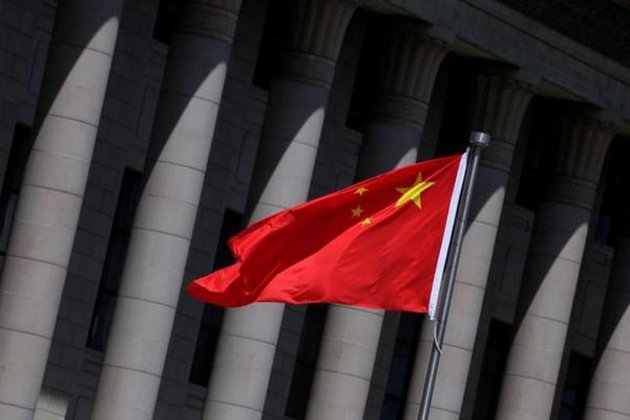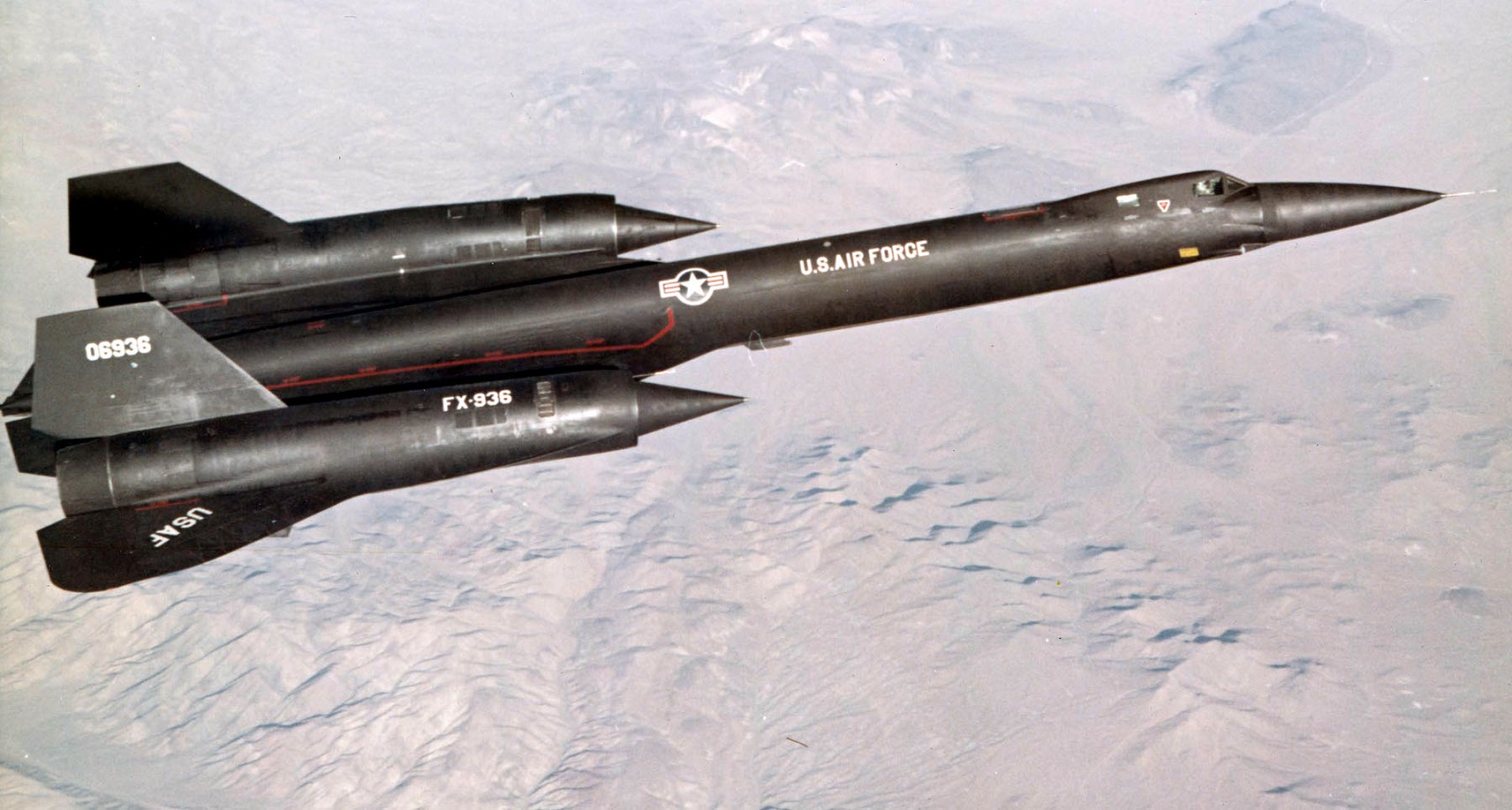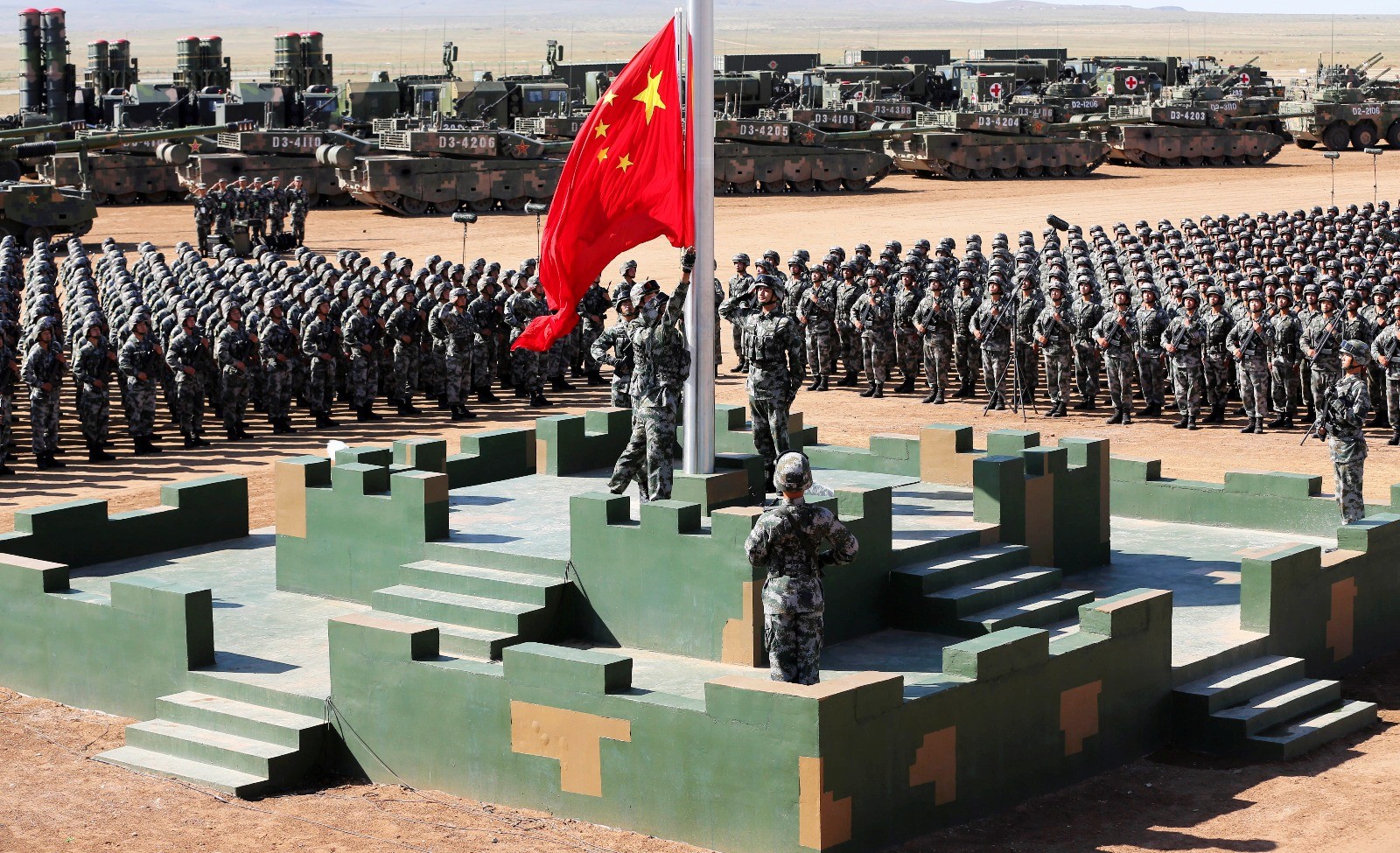Opinion
Russia Is Stepping Up Its Stealth Drone Game With A B-2 Bomber Lookalike

A flying wing similar in shape to the U.S. Air Force’s B-2 stealth bomber, Hunter-B in theory could penetrate enemy defenses to deliver ordnance.
Russia’s prototype stealth drone will make its first flight in July or August 2019, state media reported.
The Hunter-B drone will be fully autonomous and follow a pre-programmed flight path, according to Russian news agency TASS.
“The Russian defense establishment is promising a test that will include a short-duration ‘jump’—the [unmanned combat air vehicle] will rise ever so briefly above the tarmac to test its launching and landing capabilities,” said Samuel Bendett, an independent expert on the Russian military.
(This first appeared earlier in June 2019.)
“The flight will not last for long — several dozens of minutes at the maximum,” a source told TASS. “Teams on the ground will intervene if necessary.”
Hunter-B’s much-anticipated first flight could signal the beginning of a long development that could end with the Russian air force operating fighter-style stealth drones.
A flying wing similar in shape to the U.S. Air Force’s B-2 stealth bomber, Hunter-B in theory could penetrate enemy defenses to deliver ordnance.
The subsonic Hunter-B is in the same class as China’s Tian Ying drone, the U.S. Air Force’s RQ-170 surveillance unmanned aerial vehicle, the U.S. Navy’s experimental X-47B UAV and Boeing’s X-45C drone demonstrator.
It’s unclear how many Hunter-B prototypes exist. At least one was on the flight line when Russian president Vladimir Putin on May 14, 2019 visited the 929th Chkalov State Flight-Test Center in Russia’s Astrakhan region.
Commercial satellite imagery confirmed the Hunter-B drone’s presence at Chkalov alongside various other warplane types, including the Yak-130 trainer and several version of the Su-30 multi-role fighter.
It was the unmanned aerial vehicle’s first appearance since January 2019, when photos began circulating depicting the large, flying-wing UAV on the ground at an airfield in Novosibirsk.
Putin visited Chkalov apparently mostly to hype to Su-57 stealth fighter. But Hunter-B warranted a mention.
“In addition to the modern and advanced military aircraft and helicopters that were shown to us, unmanned aerial vehicles were presented,” Putin said in a prepared statement following the Chkalov visit. “I emphasize that all the activities in preparation for the serial production of this technology were performed on time.”
“Let’s get to work,” Putin said.
The War Zone journalist Joe Trevithick for one questioned whether Hunter-B is very stealthy. “The most glaring issue is the crude engine installation, which also does not seem to include any provisions for a stealthier arrangement in the future,” Trevithick wrote.
“The exhausts are a notoriously complex component of any stealth flying wing aircraft. The entire engine arrangement, including both the inlet and exhaust, also appears to be relatively in-line, another feature that would hurt the aircraft’s low-observable characteristics.”
The Chkalov satellite imagery indicates Hunter-B has a wingspan of around 50 feet, making it roughly the same size as the X-47B or an Su-34 manned fighter. Size confers volume and hints that Hunter-B, whatever its stealth qualities, might possess a large fuel load and a correspondingly long range.
“At this point, it is going to be heaviest and fastest UAV [in Russian service] if and when fielded, but additional testing and evaluation will have to take place in order for this unmanned system to be fully functional,” Bendett said. “Its speed [up to 620 miles per hour] and weight — up to 20 tons — means that a host of aerodynamic, electronic and high-tech issues need to be worked out.”
To be effective in service, Hunter-B also will need small precision-guided munitions, Tom Cooper, an independent expert on Russian military aviation, told The National Interest. The Kremlin long has lagged behind the rest of the word in PGM development.
All the above means that Hunter-B might need several more years of development before it’s ready for squadron service.
But Russian crews are already getting ready, Cooper said. “The first generation of pilots and ground crews for UAVs just completed their four-years-long training, and they meanwhile have plenty of experience in operating smaller UAVs in Syria.”
The likelihood of Hunter-B eventually entering squadron service with the Russian air force is “big,” Cooper said.
“The Russian military is running multiple UAV-related projects,” Cooper added. “Thus the emergence of this project is perfectly normal.”
David Axe serves as Defense Editor of the National Interest. He is the author of the graphic novels War Fix, War Is Boring and Machete Squad.
Image: Instagram
Opinion
Military rituals and military culture in China

Military culture influences military thinking and military strategy. Today, the armed forces of the major powers have the goal of defending their national interests and contributing to world peace.
(more…)Opinion
Forget the SR-71 Spy Plane: Meet the CIA’s A-12 (Was It Even Better?)

Key point: Both spy planes played key roles in the Cold War.
Analysis of Week’s photos located the USS Pueblo near Wonsan anchored next to two patrol boats—and also revealed that Pyongyang had not mobilized its troops for war. This led Johnson to rule out plans for a preemptive or punitive strike in favor of diplomatic measures which eventually saw the ship’s abused crew released nearly a year later.
On October 30, 1967, a CIA spy-plane soared eighty-four thousand feet over Hanoi in northern Vietnam, traveling faster than a rifle bullet at over three times the speed of sound. A high-resolution camera in the angular black jet’s belly recorded over a mile of film footage of the terrain below—including the over 190 Soviet-built S-75 surface-to-air missiles sites.
The aircraft was an A-12 “Oxcart,” a smaller, faster single-seat precursor variant of the Air Force’s legendary SR-71 Blackbird spy plane.
The jet’s driver, Dennis Sullivan had earlier flown one hundred combat missions in an F-80 Starfighter over Korea for the U.S. Air Force. But Sullivan was technically no longer a military pilot—he had been “sheep-dipped,” temporarily decommissioned to fly the hi-tech jet on behalf of the CIA. He now sat in the cramped cockpit in a refrigerated space suit, as the friction generated by his plane’s Mach 3 speeds heated the cockpit to over five hundred degrees Fahrenheit.
Sullivan noted warnings light up on his instrument panel as Vietnamese Fan Song radars locked onto him. But they did not launch missiles. In twelve-and-a-half minutes he completed his run and looped around over Thailand, where he received aerial refueling. Then he embarked on a second pass.
But the North Vietnamese were waiting for him. A missile launch notification warned him that a 10.5-meter-long missile was heading towards him.
Decades later, Sullivan described in a speech seeing one of the missiles streak just past him, two-hundred meters away.
“Here comes a big’ol telephone sailing right by the cockpit—going straight up. That’s interesting . . . So I continued down the route, and didn’t see anything—until I got down the road, and then I could see behind me in the rear-view periscope at least four missile contrails, all spread out. Those four contrails went up about 90-95,000 feet and all turned over, bunched up in a line, headed for my tail end.”
The A-12 officially had a maximum speed of Mach 3.2—but the missiles that were following Sullivan could attain Mach 3.5.
“I said, ‘Holy smokes—those things fly pretty good up there for something which doesn’t have much in the way of wings.’ So I watched them come.… They’d get up right behind me, very close, and all of the sudden there’d be a big red fireball—a big white cloud of smoke—and you’d immediately pull away from it. You were going thirty miles a minute. [Note: actually, 41 miles per minute!] Every one of those SAMs guided absolutely perfectly and did the same darn thing.”
The missile’s 440-pound proximity-fused warhead was designed to swat planes out of the sky within 65 meters of the point of detonation. However, in the thinner air of the upper atmosphere, its fragments could travel up to four times as far.
Sullivan escaped and landed his A-12 in Kadena Air Base, where it spent several minutes cooling on the tarmac before mechanics could even touch its friction-heated skin. The stress of the heat and high speeds exacted a steep physical toll on the jet’s pilots, who lost an average of five pounds of body weight on the completion of their three to four- hour missions.
He was sitting for debriefing when mechanics burst in the room to show him two metal fragments from a missile’s nose cone they had found buried under his low left wing—just shy of his jet’s fuel tank.
Later when, Sullivan’s camera footage was found to have captured the ghostly white contrails of six surface-to-air missiles surging towards him from the ground.
Operation Black Shield
The CIA’s twelve ultra-fast A-12 jets were doomed to a brief operational career after the first flight in 1962. Following on the heels of several U-2 spy plane shootdowns, Washington was no longer willing to authorize overflights of Soviet territory which the A-12 had been designed to perform. Meanwhile, the Air Force ordered a larger SR-71 variant of the A-12 that was deemed superior in a “fly off” in November 1967. Unwilling to fund both highly similar aircraft, the CIA’s A-12 fleet was promptly scheduled for retirement.
However for ten months, the A-12 briefly filled a vital niche providing rapid high-value photo intelligence over Asia, where the political and military risks were deemed acceptable. Between May 31, 1967, and March 8, 1968, CIA drivers flew A-12 on twenty-nine spy missions over Cambodia, North Korea and Vietnam in an operation codenamed Black Shield. The jets flew out of Kadena Airbase in Okinawa, Japan, supported by over 250 support personnel.
Initially, President Lyndon B. Johnson was concerned by reports that North Vietnam had obtained Surface-to-Surface (SSM) missiles for attacks on South Vietnam. On May 31, 1967, CIA driver Mele Vojvodich took of in a rainstorm and recorded a mile-long reel of camera footage covering most of Northern Vietnam. The reel was then air-transported for development by Kodak in Rochester, NY. The verdict, confirmed by subsequent overflights, was that Hanoi had no SSMs after all.
A-12 intelligence often directly influenced LBJ’s decisions to commit to air raids during the Vietnam War. However, the Oxcart’s stealth features never proved adequate to avoid detection by Soviet-built radars.
On October 28, 1967, an S-75 launched a missile at an A-12 flown by Miller, but did not come particularly close. However, after Miller’s close call two days later on October 30, the Black Shield flights were temporarily suspended. A later January 4 mission on the same route over Hanoi also elicited a missile launch, to no effect.
Meanwhile, on January 23, 1968, North Korean patrol boats seized the USS Pueblo, an American spy ship operating in international waters, taking her crew into captivity. Worrying the incident, combined with a failed commando raid on the South Korean presidential palace, might herald a second Korean War, Johnson was persuaded to dispatch an A-12 flown by Jack Weeks over North Korea on January 26.
Analysis of Week’s photos located the USS Pueblo near Wonsan anchored next to two patrol boats—and also revealed that Pyongyang had not mobilized its troops for war. This led Johnson to rule out plans for a preemptive or punitive strike in favor of diplomatic measures which eventually saw the ship’s abused crew released nearly a year later.
A-12s flew two additional missions over North Korea to keep tabs on the ship, which was eventually moved to Pyongyang. Tragically, Weeks died a half-year later on June 5 when a malfunction in his A-12’s starboard turbojet engine caused its to overheat, breaking his plane apart over the South China Sea. Sixteen days later, a CIA A-12 made its last flight before the type was retired from service.
Sullivan’s close brush over Vietnam suggests its fortunate no A-12 overflights were authorized over the Soviet Union, where they would have been exposed to even greater peril, from high-speed interceptors and more advanced SAMs like the S-200 (SA-5). Today, such high-risk photo intelligence is largely acquired by satellite, or by expendable drones.
Sébastien Roblin holds a master’s degree in conflict resolution from Georgetown University and served as a university instructor for the Peace Corps in China. He has also worked in education, editing, and refugee resettlement in France and the United States. He currently writes on security and military history for War Is Boring. (This first appeared in June 2019.)
Image: DVIDShub.
Opinion
SUN: China’s Military Deserves America’s Respect, But Not Its Fear

Key point: China’s military is advancing rapidly, but it is still plagued by corruption and discipline problems.
China’s new defense white paper has been eagerly awaited by Western analysts searching for clues to Beijing’s national security strategy.
The 2019 white paper (the last one was in 2015) lays out general principles of China’s defense policy. It avows the new face of the People’s Liberation Army (PLA). Cyberwarfare, more flexible command and control, long-range naval operations. Change the names and numbers, and you could be forgiven for thinking this was a planning document from the U.S. military or an American thinktank.
But before we fear the onslaught of the Dragon, take a look at the problems that the white paper says China’s military must solve.
The most glaring is corruption, which has led to numerous senior officers being punished for crimes such as selling promotions. “China’s armed forces are tightening political discipline and rules, investigating and dealing strictly with grave violations of CPC discipline and state laws,” the white paper says. “China’s armed forces punish corruption in strict accordance with CPC [Communist Party] discipline and relevant laws, and rectify any malpractice in key construction projects and the procurement of equipment and material…They have worked to implement full-spectrum audit, intensify the audit of major fields, projects and funds, and perform strict audits over the economic liabilities of officers in positions of leadership. Active efforts have been made to monitor the cost-effectiveness of applied funds, conduct whole-process audit, and combine civil and military efforts in auditing.”
The U.S. military has no shortage of faults. Careerism, inflated prices for military equipment, weapons that don’t work as advertised, the revolving door between the Pentagon and the defense industry. Nonetheless, it is hard to imagine the Pentagon having to cite corruption as a major impediment to military efficiency.
The U.S. military also has its share of discipline problems, such as Alcohol abuse, and sexual harassment that has derailed the careers of several senior officers. But these pale compared to the discipline problems that worry the Chinese military:
“China’s armed forces are building a military legal system with Chinese characteristics and pressing ahead with a fundamental transformation in how the military is run…They are promoting legal awareness through public communication and education campaigns, establishing and improving the support mechanism of legal consultation and service, and advancing law-based management in the military. China’s armed forces are striving to manage the troops more strictly in all respects. They have fully implemented military rules and regulations, restored and improved the traditional mechanism of using bugles to communicate and command, carried out safety inspections to identify and tackle potential problems, stepped up garrison military policing, strengthened the management of military vehicles by targeted measures, and set up a mechanism of regular notification on garrison military policing.”
There was nothing truly surprising in the white paper. It’s no secret that China has been moving away from a huge, low-tech peasant military to a smaller, more agile and high-tech force. Still, there is plenty in the paper to disturb the West as well as China’s Asian neighbors. China will continue to replace older aircraft and ships with more advanced models. It is setting its eyes on distant horizons: the PLA will “address deficiencies in overseas operations and support, builds far seas forces, develops overseas logistical facilities, and enhances capabilities in accomplishing diversified military tasks.”
And the Chinese military still has its eyes on Taiwan. “China has the firm resolve and the ability to safeguard national sovereignty and territorial integrity, and will never allow the secession of any part of its territory by anyone, any organization or any political party by any means at any time,” the white paper says. “We make no promise to renounce the use of force, and reserve the option of taking all necessary measures. This is by no means targeted at our compatriots in Taiwan, but at the interference of external forces and the very small number of “Taiwan independence” separatists and their activities. The PLA will resolutely defeat anyone attempting to separate Taiwan from China and safeguard national unity at all costs.”
Nonetheless, behind the curtain of hypersonic missiles and stealth fighters, is a military that worries about corruption and discipline. The Chinese military is to be respected, but not to be feared.
Michael Peck is a contributing writer for the National Interest. He can be found on Twitter and Facebook. (his article was originally published last month and is being republished due to reader interest.
Image: Reuters.






